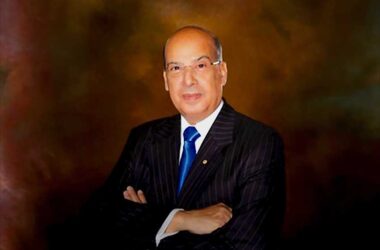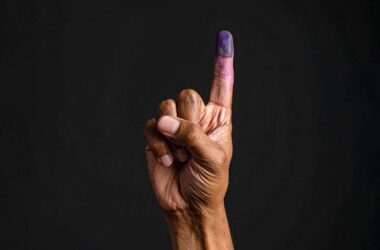
Saint Lucia has historically depended on its banana industry, which, like in Dominica, Grenada and Saint Vincent & The Grenadines, has been sliding downhill on its own skin for the past several decades, leaving governments unable to restore hope for an industry once described as producing ‘Green Gold’.
The industry has now long lost its shine and successive governments have resigned to feeling international trade mechanisms today are so generally loaded against developing nations that it makes no sense even trying to restore its traditional revered place as the enriching cream of all local crops.
Saint Lucia’s Agriculture Minister Alfred Prospere last week indicated his ministry plans to introduce bananas to students through a ‘one banana a day’ system, at all schools.
It’s not a new idea, but perhaps the first time an administration has seen the wisdom of introducing the nutritious local fruit to at least 6,000 students – in the first phase.
This is definitely good news for the comparably fewer farmers still producing bananas for an ever-dwindling export market.
But the state of the industry today and the new thinking it seems to be inspiring may be an opportune time to revisit the wisdom of remaining dependent on a vanishing export market.
Under Britain and France, the banana industries in the Windward Islands (Dominica, Grenada, Saint Lucia and Saint Vincent & The Grenadines) and the French overseas island colonies (Martinique and Guadeloupe) were tailored to provide preferential and protected access by exports of Caribbean producers to the European markets, mainly through colonial powers, the UK and France.
At independence in 1979, Saint Lucia’s banana farmers earned and lived lives of comparative comfort that improved and transformed many rural areas, shooting them up the social ladder at faster rates than most urban workers and local businesses.
After independence, when governments and national associations moved to take full control of the industry, bad actors and players started cheating the processes by various means, leading to legitimate concerns and complaints from Europeans.
The accelerated decline for Caribbean bananas hit the skies in 1992, when the USA, under President Bill Clinton, moved on behalf of the giant US-owned banana companies that already ruled the industry in Central and South America, by successfully challenging the protected status enjoyed by the young island nations on the basis of their earlier colonial ties.
The loss of the preferential European markets dealt the industry a death blow, with production and export figures plummeting by the year.
Saint Lucia’s banana exports declined from 132,854 tonnes in 1992 to 71,397 tonnes in 1997, 48,029 in 2002 and 30,000 in 2005.
Revenue earnings also slid badly – from US$71 million in 1992 to $31 million in 2005.
The number of local banana farmers fell from 10,000 in the early 1990s to 1,800 in 2005.
In 2023, Saint Lucia exported $1.03 million worth of bananas, the main destinations being Antigua and Barbuda ($818,000), Barbados ($173,000), United Kingdom ($20,900) and Canada ($13,900).
By then, the island had also moved down the ladder from being by far the largest exporter in the Windwards to the 79th largest exporter worldwide, bananas ranking downstairs as Saint Lucia’s 12th most-exported product.
The last three decades saw a virtual end to the golden age for bananas and promises to reopen old and find new markets have failed to materialise, farmers having to spend more time and money battling annual diseases and worsening hurricanes than producing for export.
Yet, never mind the annual losses, some banana farmers are still holding on regionally, shielded by guarantees such as government inputs, protection from diseases and insurance payments for hurricane damage.
The Saint Lucia ministry’s ‘one banana a day’ plan won’t refill local farmers’ near-empty pockets or help pay their outstanding and increasing costs.
But, if nurtured well, it can start a new popular movement aimed at ensuring Caribbean citizens start better understanding and eventually better appreciating the value Europeans and Americans have long seen in ‘a banana a day’.
Caribbean citizens aged over 60 will confirm growing up being told or simply hearing others say the banana tree has over two dozen uses — besides using the fruit as a nutritious food item — including using the skin for essences, leaves for paper and textiles, stems for fibres, etc.
Much research was done by the Saint Lucia-based Windward Islands banana research entity WINBAN, which went into the expansion of production and refining of production processes, but not so with the long years of unending research also undertaken by Taiwanese, based on the island since 2007.
The Caribbean Agricultural Research and Development Institute (CARDI) produced reams of paper and volumes of recommendations on how much more can be done with bananas apart from concentrating only on the extra-regional export markets.
CARDI also promoted developing a regional banana market aimed at islands and territories that don’t produce the fruit but where consumption was always guaranteed.
However, the guaranteed better and easier European prices remained more attractive to the farmers and their associations, making the islands’ banana industry entirely dependent on the UK and Europe.
This colonial-era dependence still lives with several other Caribbean food and fruit products being exported to Europe and the USA, including aloes, arrowroot, avocados, breadfruit, cocoa, citrus, coconuts, coffee, dasheen, guavas, mangoes and melons, pawpaws (papayas) and pineapples, spices, tamarind, yams, etc.
We still sell raw cocoa and coffee, buy chocolates and powdered coffee, export spices and import similarly-spiced foods, our regional food import bill growing while the government fight to stem the slides.
Saint Lucia’s Banana a Day initiative is a step in the right direction. It also opens the way to revisit how agriculture is taught at regional schools, with an emphasis on eating the best of what we produce and producing the best of what we eat.
Here too, this is nothing new, but it’s never too late to start something good.












